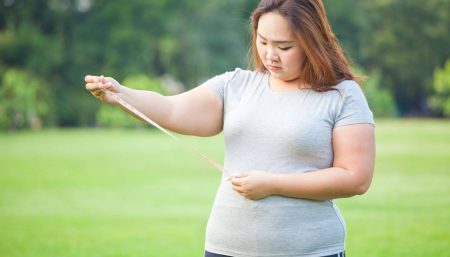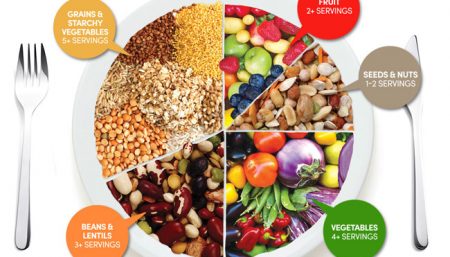
Vitamin D deficiency in women is quite common. Women Fitness brings a complete resource on how to overcome deficiency of this vital sunshine vitamin in human body.
Vitamin D is important for bones, muscles and overall health and more so in women. It is made in our bodies through a series of processes that start when our skin is exposed to the sun’s ultraviolet (UV) radiation. Vitamin D is essential for bone health. Recent research suggests it may have other benefits, too, such as protecting against colds and fighting depression. The good news is that most people get enough vitamin D, according to the Institute of Medicine (IOM).
However, if you don’t spend enough time in the sun or if your body has trouble absorbing the vitamin, you may not get enough. Scientists say that up to 41 percent of American adults don’t get sufficient levels of this crucial nutrient — which may raise their risk of heart disease, obesity, depression, diabetes, osteoporosis, and some cancers.
Plus, a September 2015 study published in JAMA Neurology found that deficiency in the vitamin was associated with faster decline in certain cognitive functions — like recalling past events and performing mental tasks like reasoning and problem solving — in older adults. So exactly how much vitamin D do you need? The National Institutes of Health recommends that adults between 19 and 70 years old get at least 600 international units (IUs) of vitamin D per day, an amount that may be tough to get from the sun alone. If you think you may be deficient — sleepiness, crankiness, and high blood pressure are all clues that you could be.
Vitamin D may be known as the sunshine vitamin, but according to a new survey by Prevention and supplement company Centrum, few of us think to look for it in the fridge—and that’s a big mistake.
“The sun is not strong enough for the body to make vitamin D from October to May, especially for those living north of Atlanta,” says Althea Zanecosky, RD, a spokesperson for the American Dietetic Association. That’s probably why nearly half of people tested at winter’s end were low on vitamin D, according to a University of Maine study.
Compounding the problem is our vigilant use of sunscreen; SPF 15 blocks 93% of UVB rays, the type our bodies use to make D. Skin also has a harder time producing vitamin D with age. All this adds up to a big problem, as evidence continues to mount that the vitamin, long associated with bone health, also helps to regulate the immune system, lower blood pressure, protect against depression, and reduce risk of type 2 diabetes, high blood pressure, and several kinds of cancer. A 2014 study from the University of California-San Diego School of Medicine also found that people with low vitamin D levels were twice as likely to die prematurely.
So are you getting enough D? Probably not. The Institute of Medicine has set the Recommended Dietary Allowance (RDA) of vitamin D at 600 international units (IU) for everyone under the age of 70. (It’s 800 IU for adults 70+.) But many experts believe that’s too low. “There is talk that the RDA may be increased,” says Zanecosky. “Many physicians are now advising 2,000 mg daily for those with low blood levels.”
Many respondents in the Prevention and Centrum recent nutrient survey were rightfully concerned they weren’t getting enough D, with 22% actively looking for it in foods. But just 9% knew that salmon is a good natural source of the vitamin, and only 5% recognized fortified tofu as one, too.
Many women are at risk of low vitamin D, particularly those with naturally very dark skin and those with little sun exposure. A balanced approach is required to ensure some sun exposure for vitamin D while minimising the risk of skin cancer.

Tips to help you get enough vitamin D
Take a balanced approach to sun exposure. UV radiation from the sun is the best natural source of vitamin D, but too much sun exposure can increase your risk of skin cancer.
From May to August in Victoria, get two to three hours of midday sun exposure per week. In Victoria, UV levels fall below three from May to August. At this time, most people need two to three hours of midday winter sun exposure to the face, arms, hands (or equivalent area of skin) over the course of a week. People with naturally very dark skin may require three to six times this amount of sun.
From September to April in Victoria, get a few minutes of mid-morning or mid-afternoon sun exposure each day. In Victoria, UV levels reach three and above for much of the day from September to April, and sun protection is required. At this time, most people need just a few minutes of mid-morning or mid-afternoon sun exposure to the face, arms, hands (or equivalent area of skin). People with naturally very dark skin, may require three to six times this amount of sun.
Use a combination of sun protection measures between September and April, when UV levels are three and above. Use a combination of clothing, sunscreen, hats, shade and sunglasses. Sunscreen use should not put you at risk of vitamin D deficiency.
Never use a solarium to increase vitamin D. A solarium gives off dangerous UV radiation, increasing the risk of skin cancer.
Speak to your doctor if you are at risk of low vitamin D. You might be at risk of low vitamin D if you have naturally very dark skin, get little or no sun exposure, have a medical condition that affects vitamin D metabolism, or take certain medications (for example, those that increase the breakdown of vitamin D). Breastfed babies who fall into the above categories, or have mothers with low vitamin D, can also be at risk.
Exercise daily. Regular exercise assists with production of vitamin D.
Eat enough calcium. Vitamin D and calcium work together to make your bones strong. Make sure you get enough calcium by including a selection of dairy products, leafy vegetables, fish, tofu, Brazil nuts and almonds in your diet.
Eat foods rich in vitamin D. Good sources include eggs, liver, and fatty fish such as mackerel, herring and salmon. Some margarines and low-fat milks have added vitamin D. Food, however, only makes a small contribution (approximately 10 per cent) to the body’s overall vitamin D levels and it is difficult to get enough vitamin D from diet alone.
Speak to your doctor before taking supplements. Vitamin D supplements may be helpful for some people, but you should speak with your doctor first and take them strictly as directed.
Natural Sources of Vitamin D
- Wild-caught fish (425 IU in 3 oz salmon, 547 IU in 3 oz mackerel)
- Beef or calf liver (42 IU in 3 oz)
- Egg yolks (41 IU per egg)
- Canned fish (154 IU in 3 oz tuna, 270 IU in 3.5 oz sardines)
- Shiitake mushrooms (40 IU in 1 cup)

Fortified Sources
- Milk: whole, nonfat or reduced fat (100 IU in 8 oz)
- Yogurt (80–100 IUs in 6 oz)
- Almond milk (100 IU in 8 oz)
- Pudding made with milk (49-60 IUs in ½ cup)
- Orange juice (137 IU in 1 cup)
- Breakfast cereals (50–100 IUs in 0.75–1 cup)
- Fortified tofu (80 IU in 3 oz)
- Oatmeal (150 IU in 1 packet)
- Cheese (40 IU in 1 slice)
- Eggnog (123 IU in 8 oz)
- Margarine (25 IU in 1 teaspoon)
Note: Not all brands are vitamin-D fortified, so read labels carefully.
The two main ways to get vitamin D are by exposing your bare skin to sunlight and by taking vitamin D supplements. You can’t get the right amount of vitamin D your body needs from food.
The most natural way to get vitamin D is by exposing your bare skin to sunlight (ultraviolet B rays). This can happen very quickly, particularly in the summer. You don’t need to tan or burn your skin to get vitamin D. You only need to expose your skin for around half the time it takes for your skin to turn pink and begin to burn. How much vitamin D is produced from sunlight depends on the time of day, where you live in the world and the color of your skin. The more skin you expose the more vitamin D is produced.
You can also get vitamin D by taking supplements. This is a good way to get vitamin D if you can’t get enough sunlight, or if you’re worried about exposing your skin. Vitamin D3 is the best kind of supplement to take. It comes in a number of different forms, such as tablets and capsules, but it doesn’t matter what form you take, or what time of the day you take it.
Different organizations recommend different amounts of vitamin D supplement to take each day. The Vitamin D Council recommends taking larger amounts of vitamin D each day than other organizations, because smaller amounts aren’t enough to give you what your body needs. Most people can take vitamin D supplements with no problems. However, if you have certain health problems or take certain medicines, you may need to take extra care.
Your body gets most of the vitamins and minerals it needs from the foods that you eat. However, there are only a few foods that naturally contain any vitamin D. Most foods that contain vitamin D only have small amounts, so it’s almost impossible to get what your body needs just from food.
Because there are only small amounts of vitamin D in food there are only two sure ways to get enough vitamin D:
- Exposing your bare skin to sunlight to get ultraviolet B (UVB).
- Taking vitamin D supplements.
- Exposing your bare skin to sunlight (ultraviolet B)
Your body is designed to get the vitamin D it needs by producing it when your bare skin is exposed to sunlight. The part of the sun’s rays that is important is ultraviolet B (UVB).
This is the most natural way to get vitamin D.
Large amounts of vitamin D3 (cholecalciferol) are made in your skin when you expose all of your body to summer sun. This happens very quickly; around half the time it takes for your skin to turn pink and begin to burn. This could be just 15 minutes for a very fair skinned person, yet a couple of hours or more for a dark skinned person.
Disclaimer
The Content is not intended to be a substitute for professional medical advice, diagnosis, or treatment. Always seek the advice of your physician or other qualified health provider with any questions you may have regarding a medical condition.



